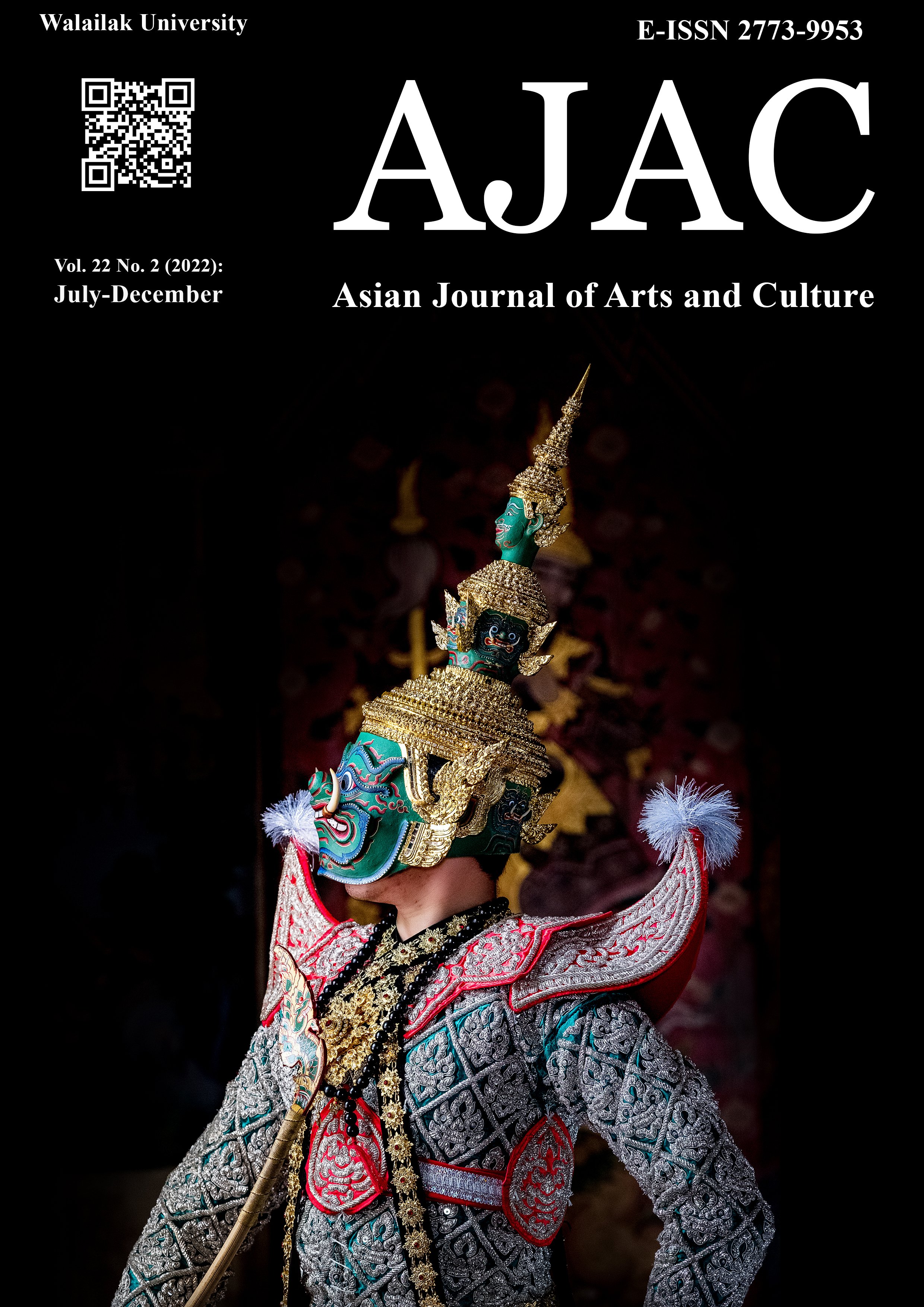Promoting local wisdom through the dimensions of applied folk dance forms Case study: Weaving loincloth in five colors of Lao Wiang community, Ban Noen Kham, Noen Kham District, Chainat Province.
Main Article Content
Abstract
A study of the process of weaving loincloths in five colors: a case study of Lao Wiang community, Ban Noen Kham, Noen Kham District, Chainat Province. Community products were creative research, the objective is to study the process and process of weaving loincloths in Lao Wiang people, Ban Noen Kham, Chainat Province at present. The loincloth in five colors is a culture on a beautiful cloth, the uniqueness of Lao Wiang, Ban Noen Kham. The creation of the work has foreseen the importance of five colors of loincloth and used it as inspiration to study the process of weaving of five colors of loincloth according to the process of Lao Wiang, Ban Noen Kham community to conserve local wisdom of Lao Wiang community, Noen Kham district, presented in the form of applied folk dance using the concept of semiotic theory to create works. In addition, the creators have studied and gathered information from related documents, interviewed experts about research and visited the area to bring the information that has been created to create a show.
The research results showed the creation of dance works from local wisdom on the process of weaving loincloths in five colors of Lao Wiang people at Ban Noen Kham, Chainat Province, a set of five colors of loincloth, can be classified according to 8 elements of the dance, as follows: 1) The performance was created from the Lao people's liking for the wisdom of weaving the loincloth in five colors, divided into 3 periods, as follows: Color Lines, Phase 2, Precious Wisdom of Noen Kham’s loincloths, and Phase 3, Noen Kham Growing Products, OTOP. 2) Selected actors with basics in performing Isan folk dances, beautiful bodies and witty in front of the stage, it also requires discipline in training. 3) The style is designed by using gestures from the villagers' five colors of loincloth weaving process to create a dance gesture for beauty. 4) Music and sound design, using Isan musical instruments in the Pong Lang orchestra type using the music pattern, melody, floor and newly created melody. 5) Equipment designed by using some equipment in the process of weaving five colors of loincloth, used as symbols. 6) Venue at the auditorium of Ayutthaya Rajabhat University. 7) The costumes, part 1, are designed using silk or cotton threads that are woven into five colors of loincloth, Part 2 is designed by bringing Lao Wiang, Noen Kham traditional costumes to improve. 8) Light to help camouflage the errors of the show and help convey emotions, feeling. The results of this research are consistent with the conceptual framework and fully comply with the objectives set by the researcher.
Article Details

This work is licensed under a Creative Commons Attribution-NonCommercial-NoDerivatives 4.0 International License.
© 2018 by Asian Journal of Arts and Culture, Walailak University. All rights reserved.
References
Angkasirisap, W. (2001). Mayakti. Bangkok, Thailand: Torch Publishing House.
Kulpisan, T. (2020). Teaching Documents for the Course ERA 317 Dance: Techniques and Project Styles of Textbooks and Teaching Documents. Fiscal Year 2020. Faculty of Fine and Applied Arts, Bangkok, Thailand: Srinakharinwirot University.
Saithongkham, J. (2018). Thai Dramatic Arts, Dance, Dance, Drama, Khon. Bangkok, Thailand: Nucha Printing.
Sunpongsri, K. (2016). Aesthetics art philosophy Theory of Visual Arts, Art Criticism. Bangkok, Thailand: Chulalongkorn University Press.
Wongsayanawa, T. (2009). Diversity of cultural diversity. Bangkok, Thailand: Printing press.


